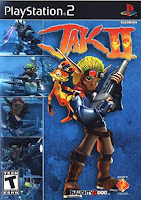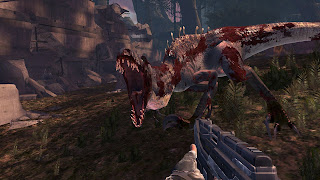The conventional wisdom that holds that video games are produced, designed, and played overwhelmingly for and by men is no longer accurate. There is no doubt that the video game industry, still relatively young compared to other artistic and technological media, reveals a historic imbalance between men and women in terms of 1) the people buying video games and 2) the people programming and developing them, but over the past decade the percentage of women playing video games has steadily increased. As of today, about two of every five video game enthusiasts are female; when web-based games are factored in, women slightly outnumber men. How have video game developers responded to this demographic shift in the video game market? The answer is difficult to clearly define, in large part because the business plans of game giants like Nintendo, Sony, and Microsoft are not easily obtained. There is an abundance of circumstantial evidence that proves developers are producing more and more games with crossover appeal; however, this evidence may simply be the result of technological advances or video game companies’ long-term plans to build a better mousetrap, and only tangentially related to women in the video game market. In any event, not all video game companies are created equal: some, like French giant Ubisoft, have invented strong, independent female protagonists and supporting characters; others, including Capcom, Namco, and Rockstar, continue to portray women as victims, prostitutes, and eye candy. That is not to say that the aforementioned companies produce poor video games or are entirely misogynistic; Capcom’s
Resident Evil franchise has a long list of female protagonists, including Jill Valentine and Claire Redfield.
Just as certain developers are more responsive, intentionally or otherwise, to female players, particular genres are better equipped to meet the demand for a more feminist video game experience. Strangely, sexual equality is rarely found in those genres that feature women most prominently: racing and fighting. Included largely to add diversity, women in racing and especially fighting games are often portrayed with little brain power and even less clothing. Leather-bound dominatrix-types are found frequently in modern fighting games, as are bleached-blond bimbos whose enormous breasts would, in a real street-fighting tournament, no doubt be a serious handicap. In the console version of the fighting game
Dead or Alive, players have the option to turn on or off “bouncing breasts” in the options menu.
Action-adventure games tend to represent women in a less exploitative way, but there are several notable exceptions, including Rockstar’s
Grand Theft Auto series. Even
The Legend of Zelda, the action-adventure franchise par excellence, has struggled with stereotypes: Princess Zelda, for whom the ongoing series is named, was before 1998 mostly a helpless damsel in distress. Many of the finest examples of complex and nuanced heroines belong to long-running franchises, particularly
Metroid and
Tomb Raider. Now and then an outstanding female protagonist will appear – Jade in
Beyond Good & Evil or Joanna Dark in
Perfect Dark – but Samus Aran and Lara Croft, who belong to
Metroid and
Tomb Raider respectively, are unquestionably the queens of the video game industry. And although they are united in terms of longevity and adoration from loyal fan bases, the two characters could not be more different in terms of their sexual symbolism. On one hand, Aran, an intergalactic bounty hunter who does freelance work for the galactic federation, could easily be mistaken for a man; almost totally obscured by a thick, heavy power suit, Aran’s identity is traditionally revealed only at the very end of a
Metroid game. Needless to say it came as quite a shock to video game players in 1987 when they finished the original
Metroid and discovered the action hero they all assumed was a man was actually a woman. Croft, on the other hand, oozes sexuality. A well-endowed (in both senses of the word) globe-trotting treasure hunter neatly tucked into a form-fitting tank top and shorts, Croft became an instant sex symbol when she debuted in
Tomb Raider in 1996. But
Tomb Raider and its many sequels are surprisingly non-exploitative; Lara Croft continues to be one of the industry’s greatest heroines, not merely a subject of sex.
Unsurprisingly, those genres that try to recreate real-world situations and those that offer players almost endless customization are the most inclusive in terms of female characters and avatars. Simulation games, like
The Sims and
Harvest Moon, allow players to manipulate male or female characters and experience lives that are not necessarily defined by traditional gender roles. In recent years, the developers at Victor Interactive Software have released twin versions of
Harvest Moon games – one in which players control a male avatar and one in which players control a female avatar. The storyline and trajectory of the games are essentially identical, but the sex of the protagonist is entirely up to the consumer. Even more progressive in terms of sexual freedom are role-playing games (RPGs). Built on the foundation laid by pencil-and-paper role-playing game
Dungeons and Dragons, video game RPGs are all about choice and customization. In many modern RPGs, players can build their characters from the ground up, including its class, race, attributes, body type, facial features, and sex. In some RPGs, namely those recently developed by BioWare, players also have a degree of control over their character’s sexual orientation. Romantic subplots in
Jade Empire and
Mass Effect allow the male or female protagonist to enter into a heterosexual or homosexual relationship with non-player characters (NPCs). Even those RPGs that do not allow players to create a custom avatar usually have several female characters to choose from (e.g.
Baldur’s Gate: Dark Alliance II) or, in the case of series like
Final Fantasy, in which players control a group of characters, many complex, powerful, and invaluable female team members. Arguably the two most important characters in
Final Fantasy III (
Final Fantasy VI in Japan), the best installment of the venerable RPG franchise, are women: Terra and Celes.
As more and more women find jobs in the video game industry and as more women of all ages continue to buy, rent, and download games, the way in which female video game characters are portrayed will surely change for the better. The last ten years have already seen significant changes, particularly in action-adventure, simulation, and role-playing games: Lara Croft has broken from the video game world and grown into a pop culture icon, becoming in 2001 and 2003 the central character in two big-budget Hollywood movies, and a symbol of sexiness, self-confidence, and fearlessness; since 2002, Nintendo and Retro Studios have released seven
Metroid games plus another highly-anticipated title due out at the end of the month; and RPG designers continue to push the limits in terms of character creation and development, restricted less by technological boundaries and more by their own imaginations. If the purpose of all art is to tell the truth and to reflect reality in a direct or oblique way – and I believe it is – then video games, in order to stay relevant, will display in their virtual worlds the truth about women: they are neither damsels in distress nor a service industry for men, but, like all of us, capable of anything and everything.
 Game: skate.
Game: skate.













